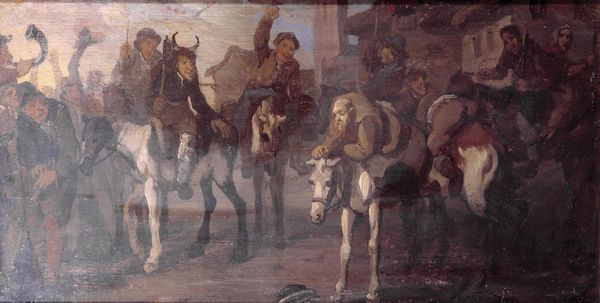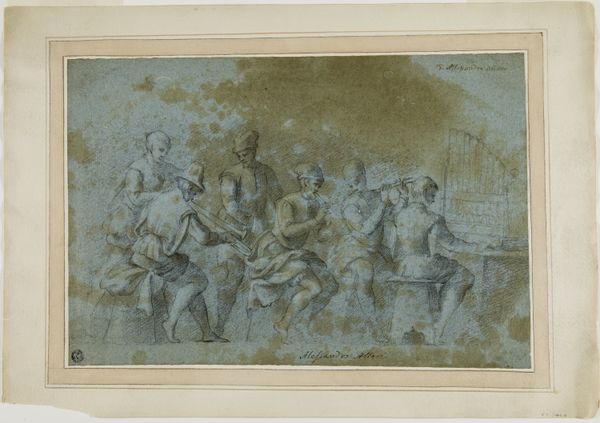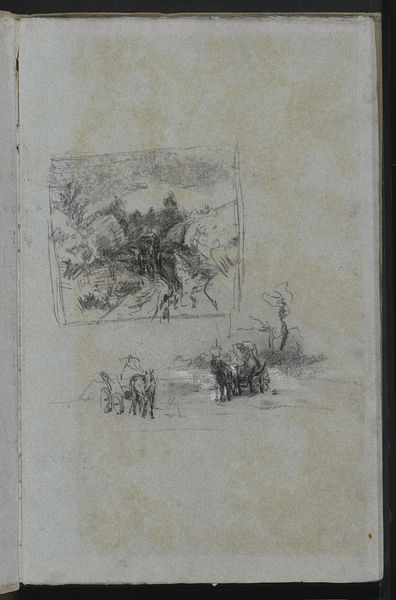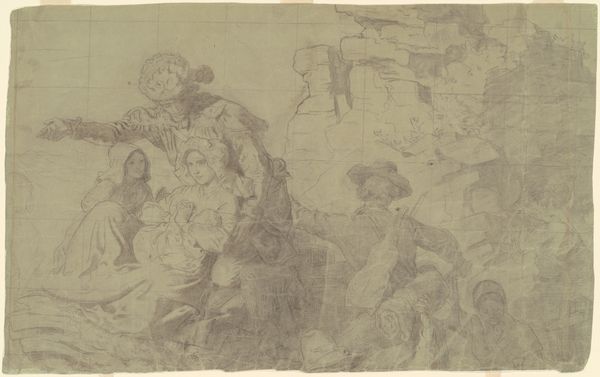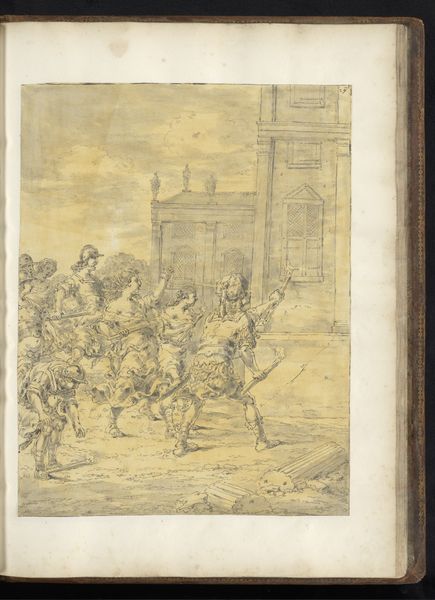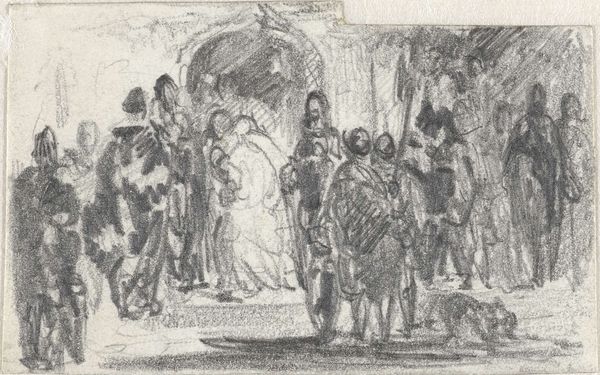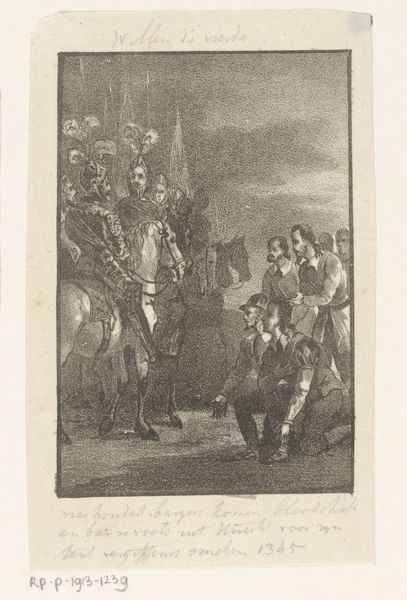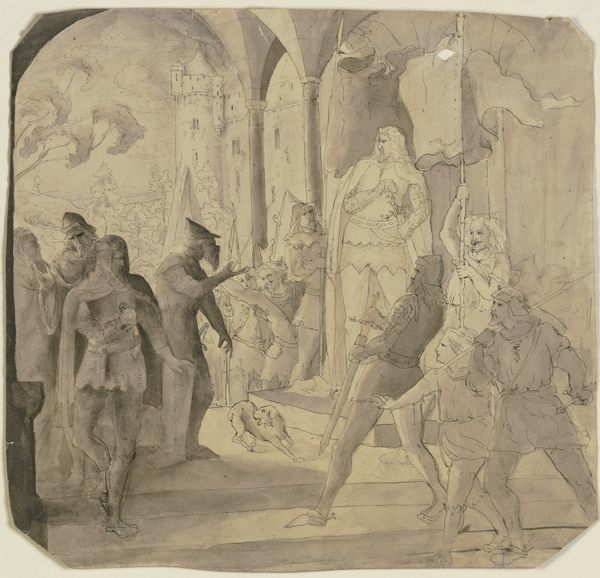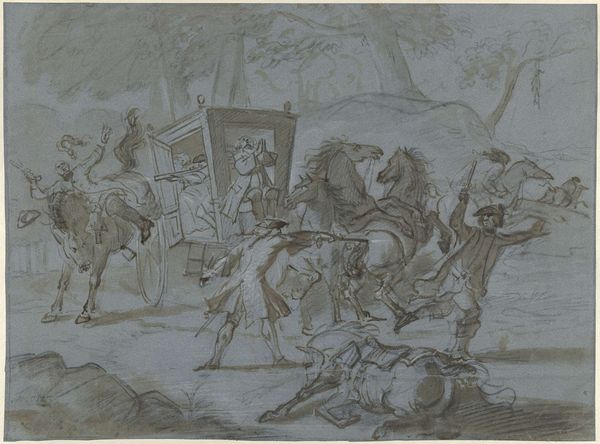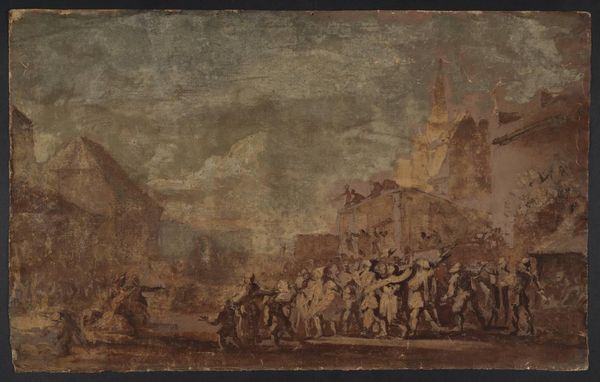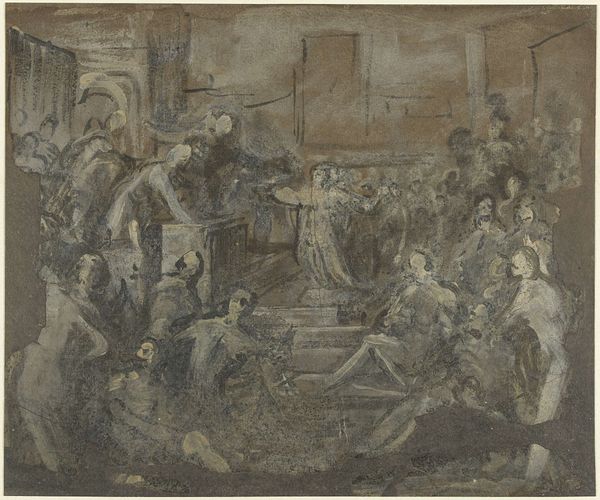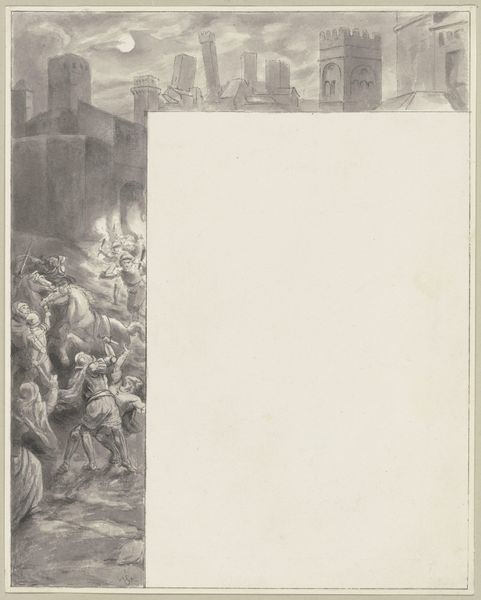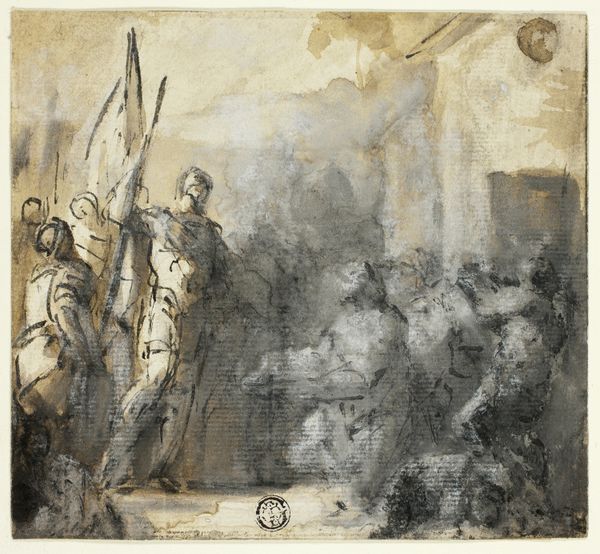
drawing, watercolor
#
portrait
#
drawing
#
water colours
#
narrative-art
#
landscape
#
figuration
#
watercolor
#
romanticism
#
line
#
watercolour illustration
#
history-painting
Copyright: Public Domain: Artvee
Curator: Here we have Robert Smirke’s "Scene from Don Quixote," an evocative watercolour drawing. There's a clear Romantic leaning in the way the composition emphasises an active scene and character figuration. Editor: My immediate response is to the raw and sketch-like quality. You can practically feel the artist's hand moving across the paper. The visible grid lines are especially striking. Curator: Precisely! The grid reveals the underdrawing, the structure upon which the image is built, and is important considering the tradition of history painting. It makes one think of preparatory sketches. Editor: It also foregrounds the materiality. Watercolour, in this state, isn’t about illusion. The translucence of the paint, combined with the exposed grid, remind us of its inherent fragility and also suggests it's a material worthy of consideration. Not just a means to an end. Curator: The scene's narrative itself holds weight; it draws us into the cultural perception of Cervantes’ work at the time. Romanticism favored stories rich in drama and moral conflict, perfectly suited to Don Quixote’s blend of idealism and delusion. Editor: Looking at the way Smirke renders fabrics and textures, or attempts to, speaks to the evolving labor practices. The artist seems focused on rapid depiction. This makes you consider the social context that creates artists focused on producing more rather than focusing on honing technique or expanding material awareness. Curator: A fair point, certainly reflective of the changing role of artists and art production in that era. It's intriguing to observe such an open approach within the tradition of history painting, a genre typically associated with a finished academic style. Editor: In this particular artwork I observe material evidence of its own making. The visible gridlines, sketchy execution and, lack of surface finish draw attention to the production that often goes unseen in the world of fine art. It presents, in some ways, its own social commentary through the process itself. Curator: I appreciate how your perspective brings attention to these production dynamics. Considering these details truly enriches our perception. Editor: Indeed! There's a compelling beauty in witnessing the traces of labor in these sorts of works that encourages a broader understanding of artistry itself.
Comments
No comments
Be the first to comment and join the conversation on the ultimate creative platform.
